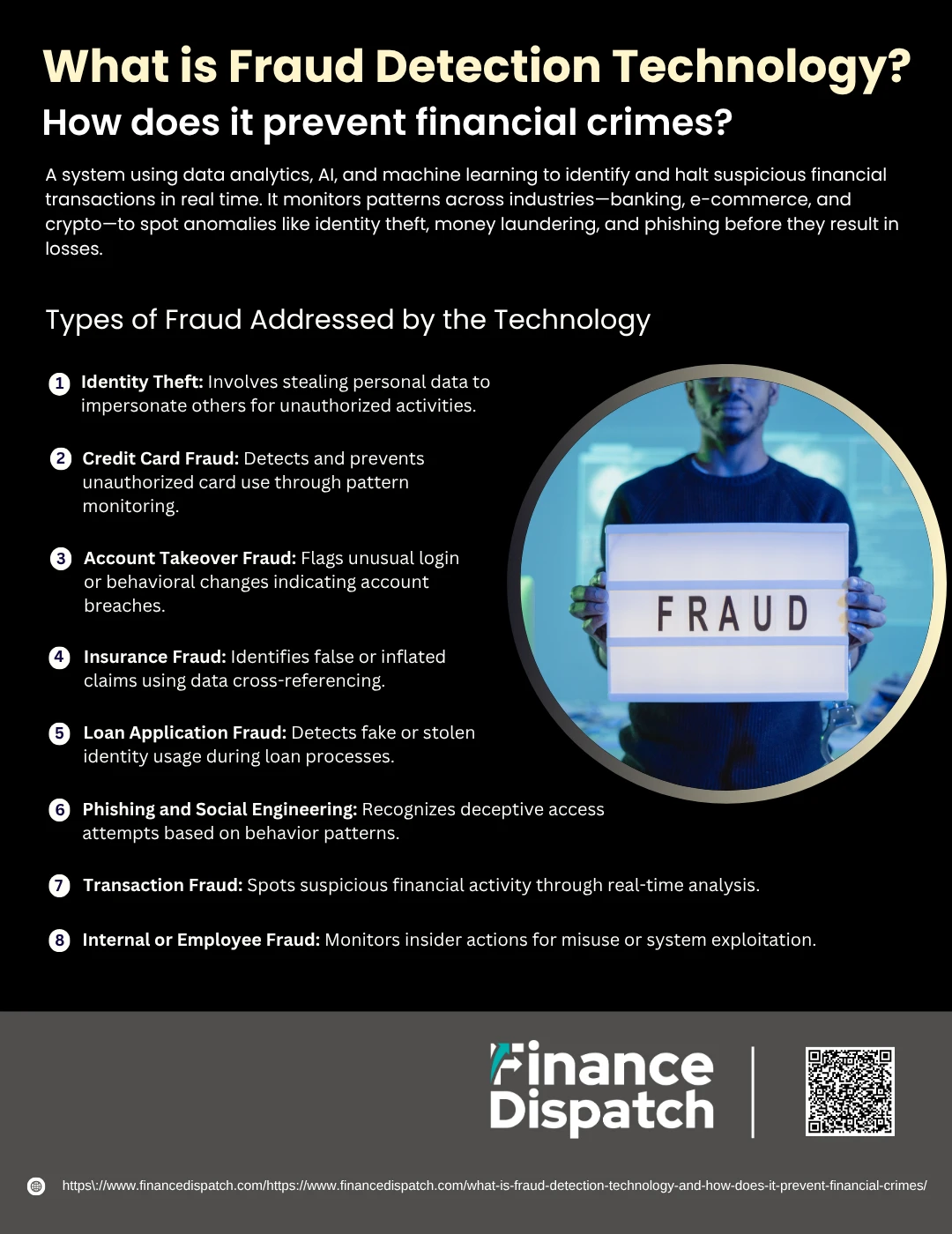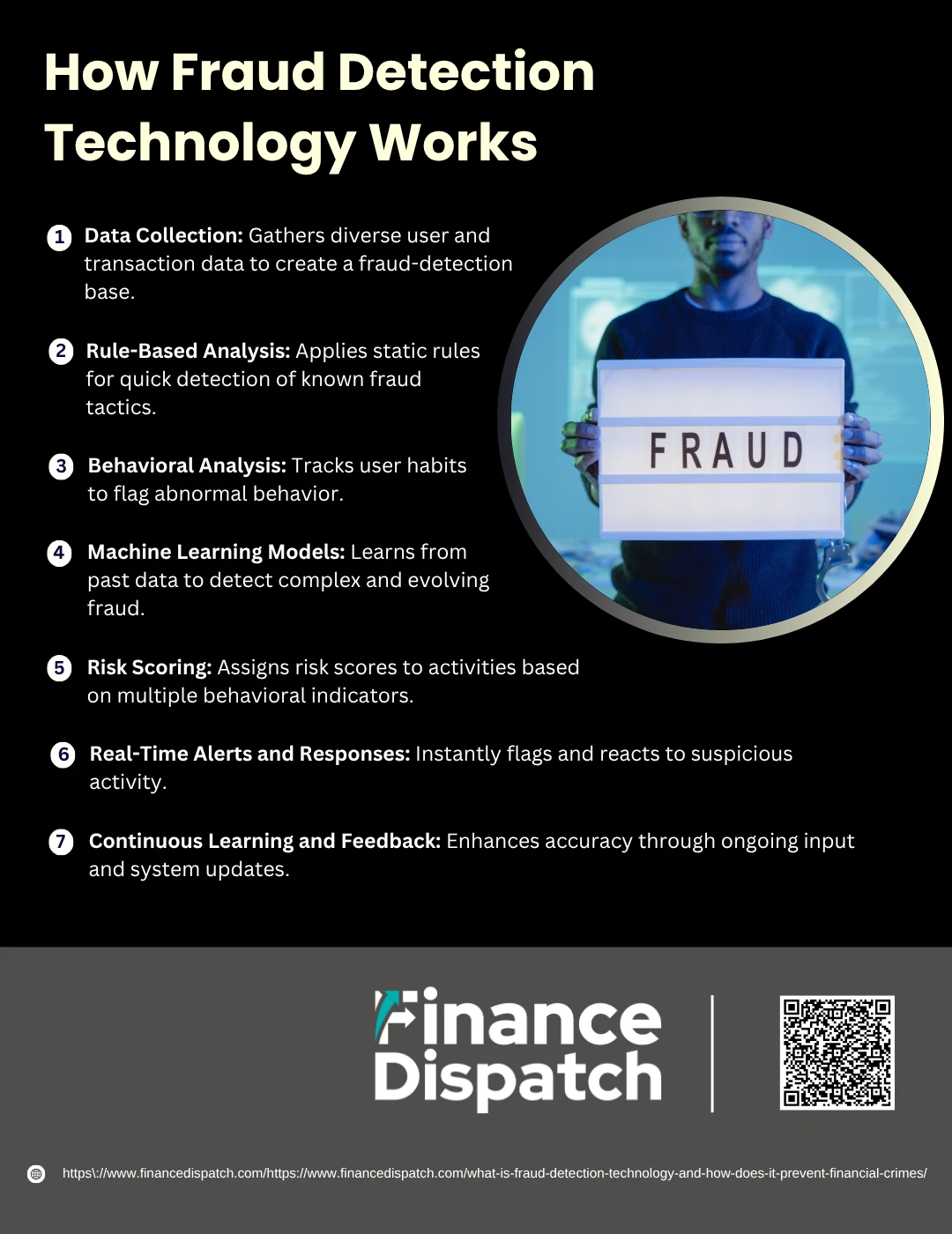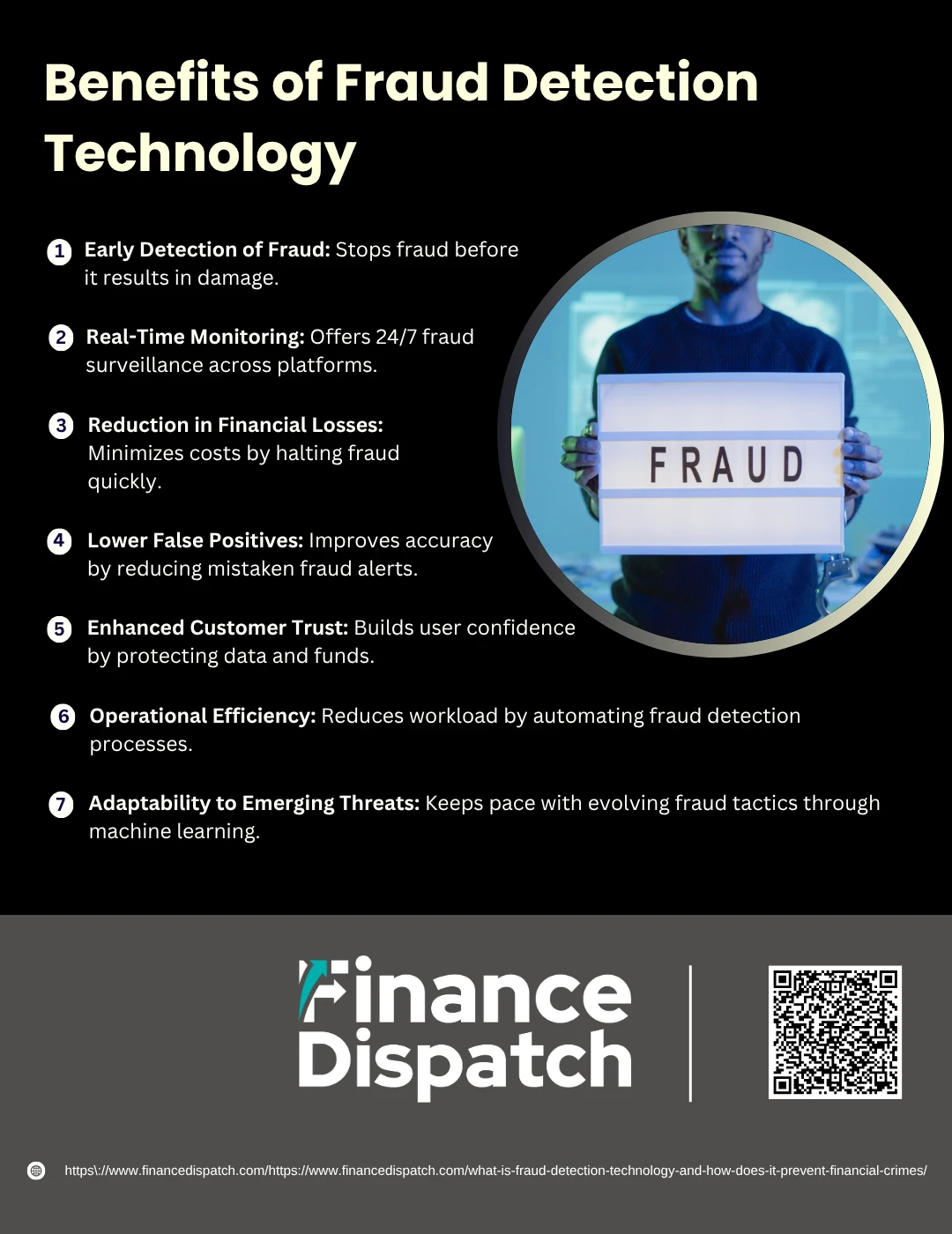In an increasingly digital world, financial fraud has become more sophisticated, frequent, and damaging than ever before. From identity theft to fraudulent transactions and account takeovers, both individuals and organizations face significant threats. To combat these growing risks, fraud detection technology has emerged as a crucial line of defense. This innovative technology leverages data analysis, behavioral patterns, and artificial intelligence to detect suspicious activities in real time, helping financial institutions and businesses prevent losses and maintain trust with their customers. In this article, we explore what fraud detection technology is and how it plays a vital role in safeguarding the financial ecosystem.
What is Fraud Detection Technology?
Fraud detection technology refers to a set of advanced tools and systems designed to identify, monitor, and prevent fraudulent activities across digital and financial platforms. It works by analyzing vast amounts of data in real time to detect unusual patterns or behaviors that may indicate fraud. These technologies combine rule-based algorithms, machine learning models, and behavioral analytics to assess the legitimacy of transactions, user actions, and account activities. By doing so, they help organizations quickly identify potential threats, mitigate risks, and take preventive actions before significant damage occurs. Fraud detection technology is essential for maintaining the integrity and security of modern financial systems.
 Types of Fraud Addressed by the Technology
Types of Fraud Addressed by the Technology
Fraud detection technology plays a critical role in safeguarding digital and financial environments by identifying and intercepting a broad spectrum of fraudulent activities. As digital transactions become faster and more frequent, so do the opportunities for malicious actors to exploit vulnerabilities. These threats aren’t limited to just external attacks—insider fraud and sophisticated schemes are on the rise as well. To counteract these risks, fraud detection systems are designed to monitor, analyze, and flag suspicious behavior across various channels. Here are the primary types of fraud these technologies are built to detect and prevent:
1. Identity Theft
Criminals steal personal identifiers such as names, social security numbers, or bank account details to impersonate others. This type of fraud is often used to open unauthorized accounts, apply for credit, or make fraudulent purchases.
2. Credit Card Fraud
Involves the unauthorized use of someone’s credit card information to make purchases or withdraw funds. Fraud detection systems monitor transaction patterns, flagging unusual activity like large purchases or transactions made in foreign locations.
3. Account Takeover Fraud
Attackers gain unauthorized access to a user’s online account—such as banking, e-commerce, or email—and use it to transfer funds, steal data, or lock out the legitimate user. Technology detects unusual login patterns or changes in user behavior to prevent such takeovers.
4. Insurance Fraud
Occurs when individuals submit false, misleading, or inflated claims to receive payouts. Fraud detection systems cross-reference claims data and behavioral trends to identify inconsistencies and flag potential abuse.
5. Loan Application Fraud
Fraudsters use fake or stolen identities to apply for loans with no intention of repayment. Detection systems evaluate data accuracy, application anomalies, and historical behavior to flag suspicious applications.
6. Phishing and Social Engineering
Involves manipulating individuals into revealing confidential information via deceptive emails, calls, or websites. Fraud detection tools may monitor for patterns in user access, login attempts, or known phishing signatures to mitigate the threat.
7. Transaction Fraud
Refers to unauthorized or deceptive financial transactions, such as high-value purchases or rapid transfers. Real-time analysis of location, device, and transaction behavior helps detect irregularities.
8. Internal or Employee Fraud
Employees with system access may manipulate data, redirect funds, or exploit privileged information. Fraud detection solutions monitor internal activities and apply behavioral analytics to detect signs of insider threats.
Why is Fraud Detection Technology Important?
As digital transactions grow in volume and complexity, the risk of financial fraud continues to escalate. Fraud detection technology has become a vital component of modern financial and security systems, helping organizations detect threats, minimize losses, and maintain customer confidence. Its importance lies not only in identifying fraud but also in preventing it before it can cause significant harm. Below are the key reasons why fraud detection technology is essential:
1. Real-Time Protection
Enables immediate identification and response to suspicious activities, reducing the chance of successful fraud attempts.
2. Rising Threat Landscape
With cybercriminals using increasingly advanced methods, traditional fraud prevention strategies are no longer sufficient.
3. Data-Driven Decisions
Uses sophisticated analytics and machine learning to detect patterns and make informed decisions quickly.
4. Customer Trust and Confidence
Secure systems help build and maintain trust among customers, which is critical for business reputation and retention.
5. Regulatory Compliance
Helps organizations comply with financial regulations and avoid penalties by demonstrating proactive fraud monitoring.
6. Cost Reduction
Early detection and prevention of fraud can save organizations from substantial financial losses and operational disruptions.
7. Scalability and Efficiency
Can monitor millions of transactions simultaneously, making it ideal for growing businesses and digital platforms.
 How Fraud Detection Technology Works
How Fraud Detection Technology Works
Fraud detection technology operates through a dynamic and multi-layered process that enables organizations to proactively identify and respond to fraudulent behavior. It doesn’t rely solely on simple red flags or preset conditions—instead, it adapts to changing patterns, learns from new data, and continuously improves its accuracy. These systems are designed to analyze enormous volumes of data in real time, flag suspicious activity, and prevent unauthorized access or transactions before significant damage can occur. Here’s a deeper look into how fraud detection technology works step by step:
1. Data Collection
The process begins with collecting vast amounts of structured and unstructured data from diverse sources—transaction logs, user profiles, devices, IP addresses, geolocations, and more. This rich dataset forms the foundation for identifying patterns and behaviors that could indicate fraud.
2. Rule-Based Analysis
Early detection systems rely on static rules like “flag any transaction over $10,000” or “block multiple failed login attempts.” These rule-based engines are still essential today as a first layer of defense, enabling quick identification of well-known fraud tactics.
3. Behavioral Analysis
This step involves monitoring user behavior over time to establish a profile of what’s considered “normal.” If a user typically logs in from one city and suddenly logs in from another country, or starts making high-value purchases they never made before, the system detects this anomaly and flags it.
4. Machine Learning Models
Advanced fraud detection technologies integrate machine learning to go beyond predefined rules. These models are trained on historical fraud data and can identify subtle, complex fraud patterns. They adapt over time to new tactics by continuously learning from outcomes—whether flagged behavior turned out to be fraud or a false alarm.
5. Risk Scoring
Each transaction or user activity is evaluated and assigned a risk score. The score is based on multiple indicators such as transaction size, location, time, frequency, and device fingerprinting. Actions that fall outside of normal parameters result in higher scores, triggering further scrutiny or automated responses.
6. Real-Time Alerts and Responses
One of the key strengths of modern fraud detection systems is their real-time capability. When suspicious behavior is detected, the system instantly generates alerts and may take automatic actions like freezing accounts, sending verification requests, or halting the transaction pending review.
7. Continuous Learning and Feedback
Fraud detection systems constantly refine their performance using feedback from human analysts, user responses, and confirmed fraud cases. This continuous feedback loop helps reduce false positives and ensures the system remains effective against emerging threats.
Core Components of Modern Fraud Detection Systems
Modern fraud detection systems are built on a combination of sophisticated components that work together to detect, assess, and prevent fraudulent activities. These systems are designed to be scalable, intelligent, and responsive, capable of analyzing vast amounts of data in real time while adapting to evolving threats. Each component plays a distinct role, from gathering and processing data to triggering alerts and learning from past incidents. The synergy between these elements ensures a comprehensive approach to fraud prevention. The table below outlines the core components and their functions:
| Component | Description |
| Data Collection | Gathers transactional, behavioral, and device data from multiple sources. |
| Risk Scoring | Evaluates the likelihood of fraud by assigning a risk level to each activity. |
| Pattern Recognition | Identifies anomalies or repeated fraud indicators by analyzing historical data. |
| Machine Learning Engine | Applies AI models to detect complex fraud patterns and adapt to new threats. |
| Rules Engine | Uses predefined business rules to flag suspicious activities instantly. |
| Alert Management | Triggers real-time notifications for high-risk activities and actions. |
| User Behavior Analytics (UBA) | Builds behavioral profiles and spots deviations that suggest fraudulent intent. |
| Case Management System | Organizes fraud alerts and investigations for analyst review and resolution. |
| Reporting and Auditing | Tracks incidents and outcomes for regulatory compliance and internal audits. |
Machine Learning in Fraud Detection
Machine learning plays a transformative role in modern fraud detection by enabling systems to recognize complex patterns and adapt to new threats with minimal human intervention. Unlike traditional rule-based methods that rely on fixed criteria, machine learning models learn from historical data—both fraudulent and legitimate—to identify subtle anomalies that may indicate fraud. These models continuously evolve, improving their accuracy over time by analyzing new behaviors, transaction patterns, and outcomes. This adaptability allows fraud detection systems to stay ahead of increasingly sophisticated fraud tactics, reduce false positives, and enhance real-time decision-making. As fraudsters become more inventive, machine learning ensures that detection technology remains agile, proactive, and intelligent.
 Benefits of Fraud Detection Technology
Benefits of Fraud Detection Technology
Fraud detection technology delivers substantial value to organizations by fortifying their defenses against both known and emerging financial threats. In today’s fast-paced digital economy—where billions of transactions take place daily across online banking, e-commerce, and mobile platforms—the risk of fraud is ever-present. Traditional methods of fraud detection, which often relied on manual review and static rules, can no longer keep pace with the speed and sophistication of modern fraudsters. That’s where fraud detection technology excels. It provides intelligent, automated, and real-time safeguards that not only identify fraudulent behavior but also prevent it from progressing into costly breaches. Below are some of the most impactful benefits this technology offers:
1. Early Detection of Fraud
By continuously analyzing behavior and transaction data, fraud detection systems can spot irregularities before fraud is fully executed. Early detection allows for rapid intervention, stopping fraudulent transactions in their tracks.
2. Real-Time Monitoring
These systems operates 24/7, scanning every transaction and user activity in real time. This constant vigilance ensures that suspicious behavior is addressed immediately, reducing response time and potential damage.
3. Reduction in Financial Losses
Detecting and preventing fraud at the earliest stage minimizes the financial damage that could result from unauthorized transactions, chargebacks, or data breaches.
4. Lower False Positives
Unlike traditional systems that often flag harmless activity as fraudulent, modern fraud detection solutions use advanced algorithms and machine learning to more accurately distinguish between genuine and suspicious actions. This improves the user experience and reduces unnecessary investigations.
5. Enhanced Customer Trus
Customers expect their data and money to be safe. When fraud detection technology prevents unauthorized access or misuse of funds, it builds trust and strengthens long-term customer relationships.
6. Regulatory Compliance
Many industries, especially banking and insurance, are subject to strict regulations regarding fraud prevention and data protection. Fraud detection technology helps organizations meet these legal obligations, reducing the risk of fines and reputational damage.
7. Operational Efficiency
Automated detection reduces the burden on fraud investigation teams by filtering out low-risk activities and prioritizing high-risk alerts. This streamlines workflows and improves productivity.
8. Adaptability to Emerging Threats
As fraud tactics evolve, machine learning models adapt by learning from new data and behavior trends. This ensures that the system remains effective against novel and sophisticated schemes.
Challenges and Limitations of Fraud Detection
While fraud detection technology offers powerful protection against financial crimes, it is not without its challenges and limitations. Implementing and maintaining an effective fraud detection system requires significant resources, ongoing refinement, and a balanced approach to avoid disrupting legitimate user experiences. As fraudsters become more sophisticated, even the most advanced systems must contend with complex technical and operational hurdles. Below are some common challenges and limitations associated with fraud detection:
1. High Implementation and Maintenance Costs
Developing and deploying fraud detection systems—especially those using AI and machine learning—can be expensive and resource-intensive for organizations.
2. False Positives and Negatives
Overly aggressive detection may flag legitimate transactions (false positives), frustrating customers, while overly lenient systems may miss actual fraud (false negatives).
3. Evolving Fraud Techniques
Fraudsters continuously adapt their tactics, requiring constant updates and model retraining to keep detection methods effective.
4. Data Privacy Concerns
Collecting and analyzing user data for fraud detection must comply with privacy regulations, which can limit access to essential information.
5. Integration Complexity
Integrating fraud detection technology with existing systems and workflows can be technically challenging and time-consuming.
6. Limited Historical Data for New Businesses
Startups or newer platforms may lack sufficient data to train effective machine learning models, reducing early detection capabilities.
7. User Friction
Additional verification steps and security checks may inconvenience legitimate users, potentially impacting user satisfaction and retention.
Real-World Applications of Fraud Detection
Fraud detection technology is widely used across various industries to safeguard sensitive data, financial transactions, and customer trust. In the banking and financial sector, it monitors millions of transactions daily to identify anomalies such as unauthorized access, money laundering, and fraudulent wire transfers. E-commerce platforms use it to detect suspicious purchase behaviors, fake accounts, and payment fraud in real time. Insurance companies apply fraud detection to flag exaggerated or falsified claims, while telecommunications providers monitor for identity theft and SIM card fraud. Even healthcare institutions utilize fraud detection systems to catch billing fraud and prevent misuse of patient data. These real-world applications demonstrate how fraud detection technology serves as a vital defense mechanism in today’s interconnected digital economy.
The Future of Fraud Detection
The future of fraud detection is poised to become more intelligent, adaptive, and proactive as technology continues to evolve. Artificial intelligence and machine learning will play a greater role in predicting fraudulent behavior before it occurs, using deep learning algorithms and predictive analytics to identify subtle patterns and emerging threats. Integration with blockchain technology may offer enhanced transparency and security, particularly in financial and supply chain transactions. Additionally, behavioral biometrics—such as typing patterns and mouse movements—will add another layer of personalized, real-time fraud prevention. As fraudsters develop more sophisticated techniques, future fraud detection systems will become increasingly autonomous, leveraging real-time data and continuous learning to stay one step ahead in an ever-changing digital landscape.
Conclusion
Fraud detection technology has become an essential safeguard in today’s fast-paced digital world, where financial crimes are more sophisticated and frequent than ever. By leveraging data analytics, machine learning, and real-time monitoring, these systems help organizations detect and prevent fraud before it causes significant harm. From protecting consumer transactions to ensuring regulatory compliance, fraud detection technology strengthens the trust and security that modern financial systems rely on. As digital threats continue to evolve, the continued advancement of fraud detection tools will play a critical role in maintaining a secure and resilient financial environment.



